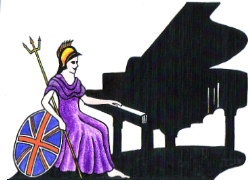Teachers, Accompanists and Piano Entertainers in the UK

UK Piano Page

117 Narborough Rd
Leicester, Leicestershire LE3 0PA
England
Keysound Looking for music shops in Leicester? We
Unit 15, Witham Point
Wavell Drive
Lincoln, Lincolnshire LN3 4PL
England
We are dedicated piano specialists in Lincoln and
40 Irongate
Derby, Derbyshire DE1 3GA
England
Charles Foulds opened the first Foulds shop in
154 Sidwell Street
Exeter, Devon EX4 6RT
England
Founded in April 2007 and following on from the
Colonial House
Southend-on-Sea, Essex SS0 9ST
England
We specialise in reconditioned and restored
Music Festival for performers and guests Our 10th
18-06-2022 01:30PM
The Morecambe Bay Piano Group was set up to extend
11-12-2021 02:00PM
The Morecambe Bay Piano Group was set up to extend
08-01-2022 02:00PM
The Morecambe Bay Piano Group was set up to extend
12-02-2022 02:00PM
What is the difference between Overdamping and Underdamping?
Take the same elastic band and place your finger near the centre to stop it from vibrating this is underdamping, which of course is more efficient. Overdamping is controlled by gravity where as underdamping is controlled by adjustable springs so on the whole underdamping is far more efficient than overdamping. However, there is one disadvantage with underdamping. That is, if the dampers are incorrectly aligned to the nodes and antinodes of the vibrating string this will result in, the dampers when they come in contact with the string, emphasising certain harmonics on the piano, thus giving you a harmonic ring, this is more common on small uprights and small grandís as the margin of tolerance decreases as the piano becomes smaller.